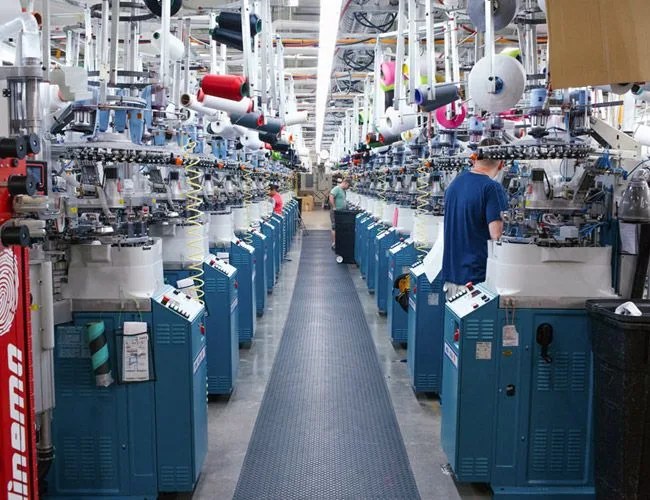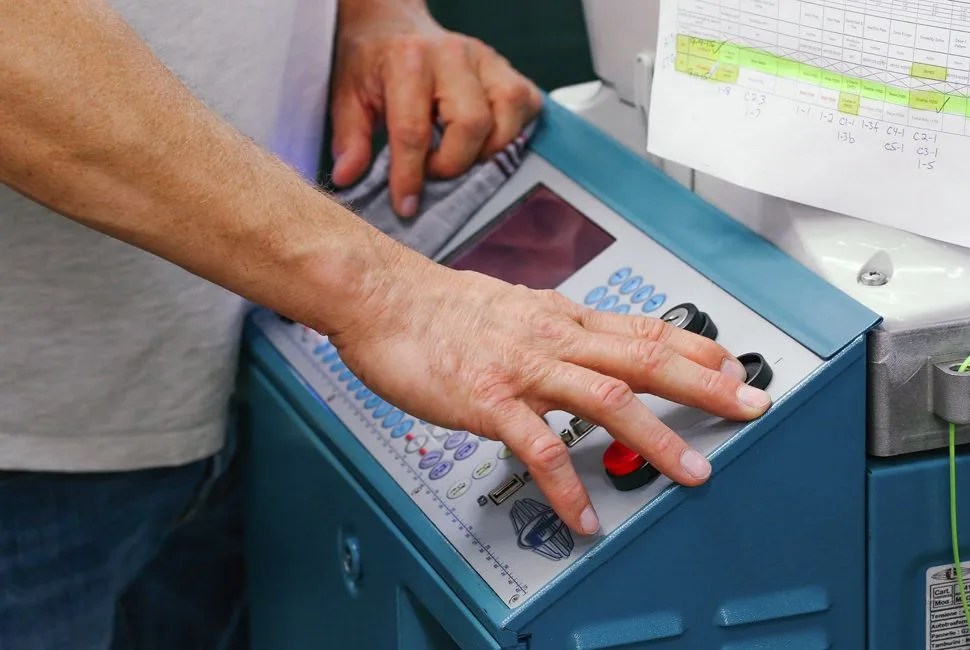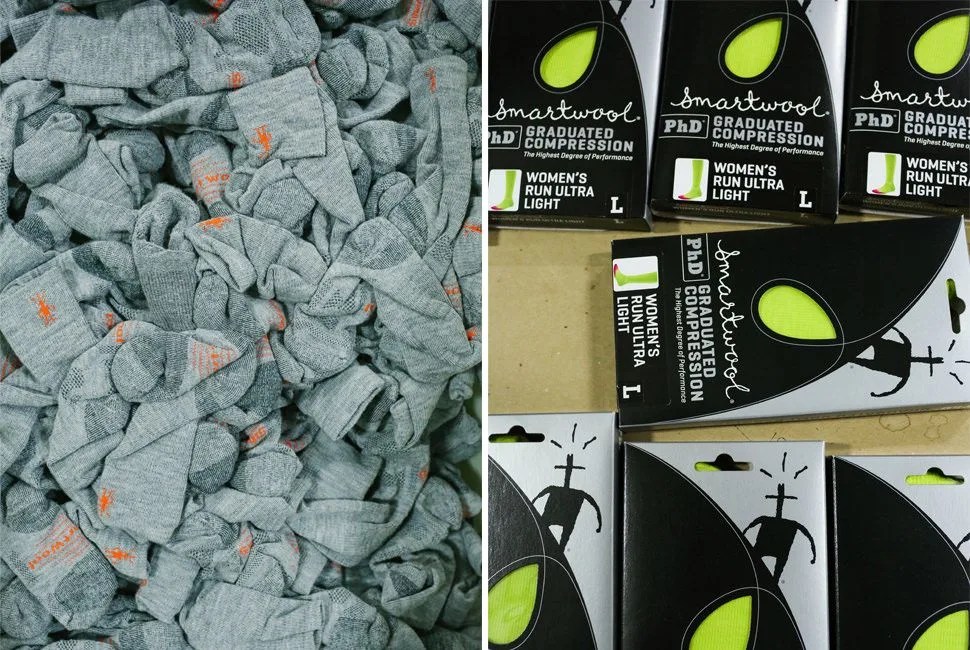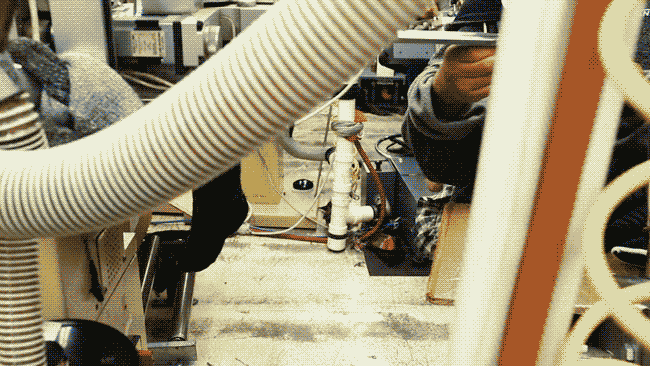17 photos
“I‘m really crazy about foot care,” Conrad Anker, the mountaineer, says. “If your feet aren’t working, nothing is working.” He takes off his shoe and removes a sock and hands it to me in the backseat of the car as we drive along a stretch of I-75 between Chattanooga and Cleveland, Tennessee, en route to the mill that knitted this sock. “Pardon me,” he says. “This shouldn’t be too smelly.”
These socks are a prototype in its 9th or 10th iteration, designed and in testing for a fall 2016 release as the PhD Outdoor Mountaineer Sock by Smartwool, milled at the Renfo production facility in Cleveland, our destination. Though a custom sock is a largely unnecessary indulgence for most people, when you’re one of the most accomplished mountaineers in the world your feet benefit from a higher level of tailoring to help negotiate the difficult terrain and harsh conditions they encounter.
Anker has been working closely with Smartwool Director of Sock Development John Ramsey, whose family business has been in sock design for four generations. For this sock, Anker requested varying degrees of cushion — thick in the heel and toe, for example, and thin above the ankle — plus compression to keep the sock in place and to aid in muscle recovery. On top of that, the sock needed to be durable and breathable on his long expeditions in the Himalayas. Merino wool is breathable — and it adds a bit of “scratchiness” that Anker says is good for improving circulation when you’re in cold alpine climates — and is naturally a durable fiber. But to use a merino sock in a mountaineering boot, day after day, without having it fall apart, there’s some novel engineering required.

Wool’s “scratchiness” is good for improving circulation when you’re in cold alpine climates, according to mountaineer Conrad Anker.
Smartwool’s latest-generation technology, Indestructawool, allowed Ramsey’s team to execute Anker’s specific sock needs. Ramsey describes it as a “durability-based solution system” that balances comfort, fit and durability by incorporating three separate pieces into the sock: the skin (merino wool), the skeleton (elastic, made of lycra and nylon) and armor (nylon). “In short,” Ramsey says, “everything we’ve seen that exists out there is a two-piece system. We’ve created a three-piece system, which is all about putting the right yarns in the right places for the right reasons.” The merino skin provides comfort and breathability; the skeleton provides a foundation and stretch-to-fit properties; the armor is used as plating on the outside of the sock to protect against abrasion to the merino on the inside. Indestructawool, according to Smartwool, resulted in a 33 percent increase in durability over their previous technology, a two-piece system called Reliawool.


















